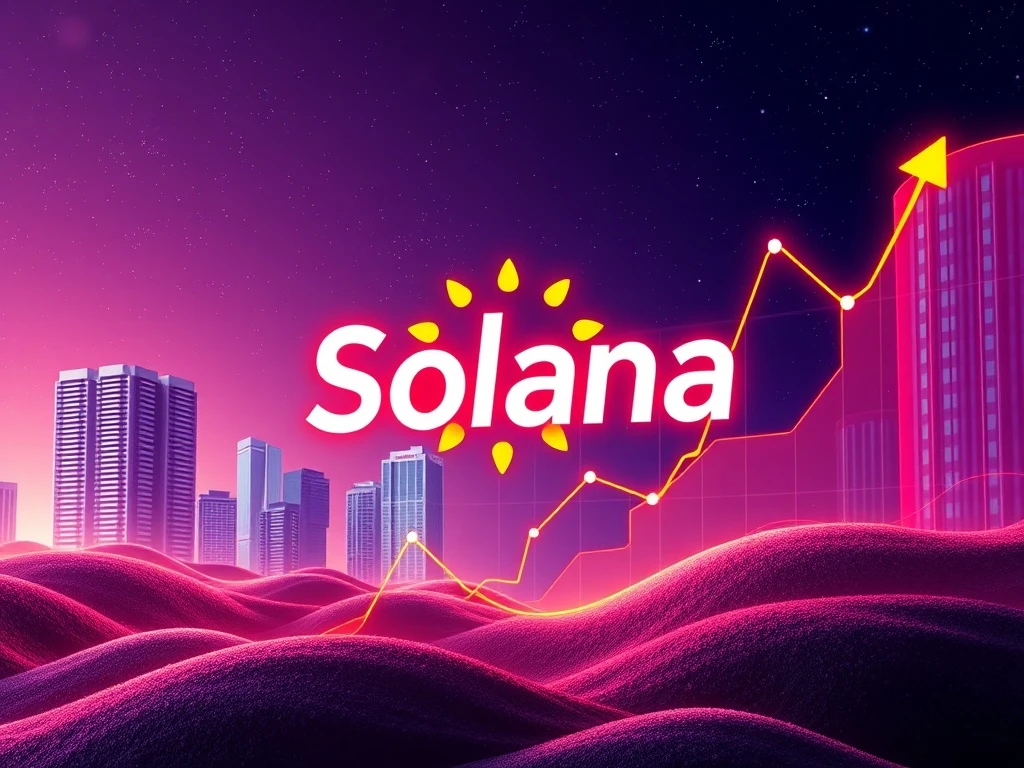Solana ETFs: Historic Breakthrough Poised to Inject Billions into Crypto Market

The cryptocurrency world is abuzz with a monumental shift. Solana, a prominent blockchain platform, stands on the cusp of a significant transformation. The approval of the first Solana staking Exchange-Traded Fund (ETF) marks a historic moment for the digital asset landscape. This development is not merely about a single cryptocurrency; it signals a broader acceptance of digital assets within traditional finance. Investors are now closely watching the launch of these new Solana ETFs, anticipating a substantial influx of capital. This move promises to inject billions into Solana and the wider altcoin market, reshaping investment strategies for institutions globally.
Solana ETFs: A Transformative Milestone for Crypto Investment
Solana is definitively stepping into the “big league” of digital assets. The recent approval of its first staking ETF represents a transformative milestone. Analysts project this could attract an additional $3 billion to $6 billion in new capital within its first year. Ryan Lee, chief analyst at Bitget exchange, highlighted this potential. He believes Solana could now attract between $3–$6 billion in its first year. This significant projection underscores the growing appetite for regulated crypto investment vehicles. Bitwise’s Solana (SOL) ETF is among those expected to launch soon. Furthermore, this move could open doors for wider altcoin adoption among yield-seeking institutions.
The Appeal of SOL Staking: Generating Passive Income for Institutions
A key differentiator for these new Solana ETFs is their integrated staking feature. Staking involves locking up cryptocurrency tokens to support a proof-of-stake (PoS) blockchain network. In return, participants earn passive income. This mechanism introduces an additional 5% passive income for ETF holders. Consequently, this dynamic is highly attractive to institutional investors. They constantly seek compliant and yield-generating investment opportunities. The ability to earn yield directly from the ETF structure makes SOL staking particularly compelling. It combines the security and accessibility of an ETF with the income-generating potential inherent in the Solana blockchain. This feature alone could drive substantial institutional capital into the broader altcoin sector, moving beyond just ETF products.
- Staking Definition: Locking tokens to secure a PoS network.
- Passive Income: ETF holders can earn an additional 5% yield.
- Institutional Appeal: Offers compliant, yield-generating investment.
Paving the Way for Broader Altcoin Adoption and Market Growth
The success of Solana ETFs extends beyond Solana itself. It signals a broader acceptance of altcoins within regulated financial frameworks. This development is expected to drive new capital into various sectors. These include Decentralized Finance (DeFi), real-world asset (RWA) tokenization, and multi-asset ETF products. Eric Balchunas, a Bloomberg analyst, noted that at least three altcoin ETFs are expected to launch. Besides Bitwise’s Solana ETF, Canary’s Litecoin (LTC) and Hedera (HBAR) ETFs are also anticipated. This expansion into other altcoins highlights a maturing market. Institutions are increasingly comfortable exploring digital assets beyond Bitcoin and Ethereum. This shift marks a significant moment for altcoin adoption, providing more avenues for diversified crypto exposure.
Institutional Crypto Interest Soars: Learning from Bitcoin and Ether ETFs
The launch of US spot Bitcoin ETFs provided a clear precedent. These ETFs debuted on January 11 and quickly gained traction. They accounted for approximately 75% of new investment when Bitcoin recaptured the $50,000 mark on February 15. The historic launch attracted $36.2 billion in investments during its first year. Similarly, US spot Ether (ETH) ETFs amassed $8.64 billion during their first year. These figures underscore the massive demand from traditional investors for regulated crypto products. JPMorgan, a multinational investment bank, has also weighed in. Based on Bitcoin and Ether ETF adoption rates, they predict a Solana ETF could attract between $3 billion and $6 billion. Furthermore, an XRP ETF might garner $4 billion to $8 billion in new investments. This growing comfort with institutional crypto investment signifies a pivotal moment for the industry.
The Transformative Impact of Cryptocurrency ETFs on Market Liquidity
New crypto-based ETFs possess the potential to propel their underlying altcoins to new all-time highs. These investment vehicles provide a familiar and accessible entry point for institutional and retail investors. They bypass the complexities of direct crypto ownership, such as setting up wallets or managing private keys. Consequently, Cryptocurrency ETFs enhance market liquidity and deepen capital markets for digital assets. The regulatory approval by the US Securities and Exchange Commission (SEC) lends significant credibility. This approval validates the asset class, making it more palatable for conservative portfolios. The presence of these ETFs fosters greater market stability and transparency. It also encourages further innovation within the digital asset ecosystem. This includes developments in compliant, yield-generating structures, driving new capital into various blockchain applications.
The emergence of Solana ETFs marks a critical juncture for the cryptocurrency market. It signifies a profound shift towards institutional integration and mainstream acceptance. The combined allure of Solana’s technological prowess and the passive income generated through staking makes these ETFs exceptionally attractive. As more altcoin ETFs gain approval, the landscape of digital asset investment will continue to evolve. This evolution promises greater accessibility, enhanced liquidity, and sustained growth for the entire crypto economy. The journey of Solana into the financial “big league” is just beginning, and its success could indeed chart a new course for altcoins globally.








